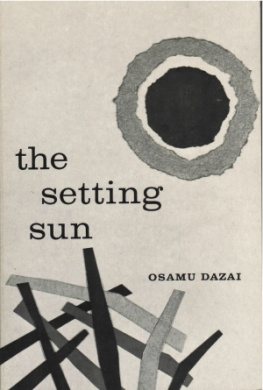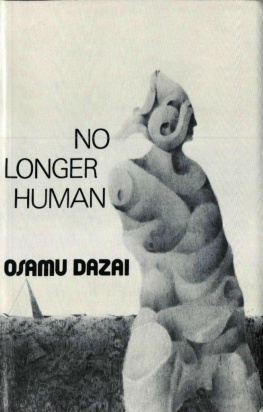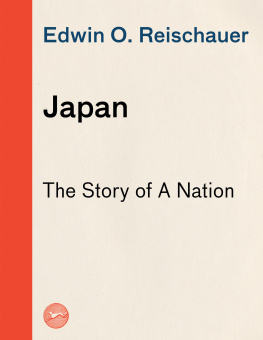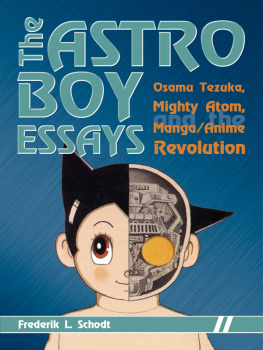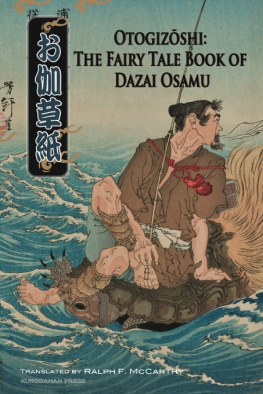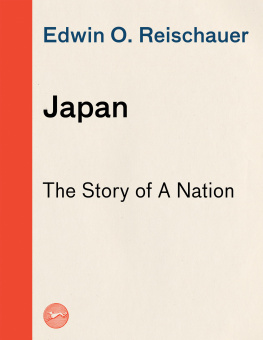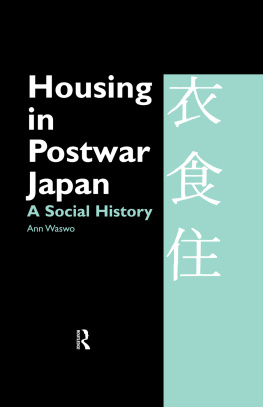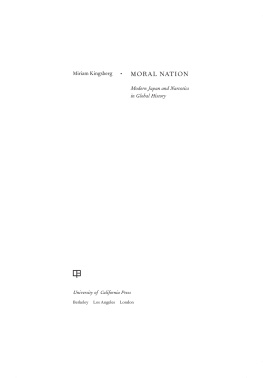Osamu Dazai - The Setting Sun
Here you can read online Osamu Dazai - The Setting Sun full text of the book (entire story) in english for free. Download pdf and epub, get meaning, cover and reviews about this ebook. year: 1968, publisher: New Directions, genre: Non-fiction. Description of the work, (preface) as well as reviews are available. Best literature library LitArk.com created for fans of good reading and offers a wide selection of genres:
Romance novel
Science fiction
Adventure
Detective
Science
History
Home and family
Prose
Art
Politics
Computer
Non-fiction
Religion
Business
Children
Humor
Choose a favorite category and find really read worthwhile books. Enjoy immersion in the world of imagination, feel the emotions of the characters or learn something new for yourself, make an fascinating discovery.
- Book:The Setting Sun
- Author:
- Publisher:New Directions
- Genre:
- Year:1968
- Rating:5 / 5
- Favourites:Add to favourites
- Your mark:
- 100
- 1
- 2
- 3
- 4
- 5
The Setting Sun: summary, description and annotation
We offer to read an annotation, description, summary or preface (depends on what the author of the book "The Setting Sun" wrote himself). If you haven't found the necessary information about the book — write in the comments, we will try to find it.
This powerful novel of a nation in social and moral crisis was first published by New Directions in 1956.
Set in the early postwar years, it probes the destructive effects of war and the transition from a feudal Japan to an industrial society.The Setting Sun — read online for free the complete book (whole text) full work
Below is the text of the book, divided by pages. System saving the place of the last page read, allows you to conveniently read the book "The Setting Sun" online for free, without having to search again every time where you left off. Put a bookmark, and you can go to the page where you finished reading at any time.
Font size:
Interval:
Bookmark:
Published by the Charles E. Tuttle Company, Inc. of Rutland, Vermont and Tokyo, Japan, with editorial offices at Suido 1-chome, 2-6, Bunkyo-ku, Tokyo, Japan, by special arrangement with New Directions Publishing Corporation, New York.
Copyright 1956 by New Directions Publishing Corporation
All rights reserved.
Except for brief passages quoted in a newspaper, magazine, radio, or television review, no part of this book may be reproduced in any form or by any means, electronic or mechanical, including photocopying and recording, or by any information storage and retrieval system, without permission in writing from the Publisher.
First Tuttle edition, 1981
Third printing, 1987
ISBN 4-8053-0474-X
Printed in Japan
Japanese in transcription is pronounced with the consonants as in English and the vowels as in Italian. Thus, the name Naoji is pronounced nah-oh-jee. There is no marked stress accent, and one is safe in giving equal weight to all syllables.
In this novel most of the characters (such as Naoji, Kazuko, and Osaki) are referred to by their personal names only. Where both personal and family names are given, the family name comes first. Thus, in the name Uehara Jiro, Uehara is the family name and Jiro the personal name.
The foreign visitor to Japan today is apt to be at once delighted and dismayed by what he observes. The delight will probably stem from what is old in the country the temples set in their clean-swept grounds and gardens, the brilliant spectacle of the theatres, the cordiality and charm of one's reception in any Japanese home. Most travelers indeed are so captivated by this aspect of Japan as to become excessively critical of what the past sixty or seventy years have brought from the West. They bewail the fact that many Japanese women have given up their beautiful kimonos in favor of mass-produced dresses, that the Japanese house is all too frequently marred by a "foreign-style" room with lumpish furniture obscurely derived from European prototypes, and that the streets are filled with the din of clanging trams and squawking loud-speakers. Those who complain in these terms are quite justified in their aesthetic indignation, although not in the arrogant impatience with which it is too often accompanied.
Japan today, alone of the nations of Asia, is closely connected to the West, not only in its industrial and political developments, but in its active cultural life. The bookshops are full of European (especially French) works of literature in translation, including all the latest and most difficult ones. There are numerous coffee-shops where students gather to listen to records of Beethoven and Brahms, if not of Debussy and Stravinsky. Even the banks send out calendars all over the country with excellent reproductions of Renoir, Van Gogh, or Matisse. It may be debated how deeply this interest in modern Western literature and art penetrates, whether the farmer in his village has any better understanding of Goethe or Manet than his grandfather did. The fact remains that almost everywhere in Japan education has brought with it a profound respect for Western culture, and sometimes a genuine love.
This feeling has often been indiscriminate and led to a defacement of the Japanese landscape which we may find all but unpardonable, but it has not been only adulation for the West which has led to many of the changes so deplored by the foreign visitor. The Japanese woman who abandons the traditional kimono in favor of a dress is not merely imitating some Hollywood star; she is liberating herself from the nuisance of the elaborate series of robes and underrobes, unbearably hot in summer and impractical at any time of the year in the offices and busses she must cope with today. Even if she would like nothing better than to wear a kimono every day, the cost of the expensive silks makes the traditional costume a luxury which few can afford unless they have inherited them.
The face of Japan is changing every day as taste, convenience, and economic necessity dictate. Underneath the surface, at an undeniably slower pace, the moral and spiritual life of the country is undergoing similar change. The family system is breaking up, especially in the larger cities, and the traditional values associated with the family are losing ground. Divorce, for example, is now accepted (at least in Tokyo) as the alternative a woman has to an odious marriage, although until very recently she was expected to accept the flagrant infidelity of her husband and any other indignity he might choose to inflict on her in the interest of preserving the family. It will take years for such new ideas to spread throughout the country, but even today few of the younger people share their parents' belief in the traditional views.
As far as religion goes, one would have to look very hard to find in Japan even as much fervor as exists in this country, let alone India. Although most Japanese are nominally Buddhists and are buried, for form's sake, in accordance with Buddhist ritual, real interest in the religion is comparatively unusual. If, for example, the Prime Minister of Japan were to adopt the practice of important political figures in the United States and England (and elsewhere, of course) of invoking the blessings of the Deity any deity on the heads of the Japanese people, he would be greeted with astonishment and possibly derision. It may seem strange that Japan, which has borrowed so much from the West, has never taken more to Christianity. There has in fact been a decline of interest in Christianity since its high point at the turn of the century when many of the intellectual leaders were devout believers in a "churchless" Protestantism. This form of Christianity has not proved satisfying to most of their descendants who, even if they remember the Bible lessons of their childhood, find in them no adequate solution to their present problems.
The people whose lives are described in The Setting Sun are in many ways exceptional, but they are also typical of modern Japan. Kazuko, the girl who relates the story, seems more accustomed to wearing Western clothes than kimonos, is reminded as often of Chekhov or Balzac as of The Tale of Genji, and, if not fluent in any Western language, uses a variety of French and English phrases with certainty that she will be understood by everyone. At the same time, she remains unmistakably Japanese in her relations with the people around her and in her quick emotional responses to the moments of intensity in her life. Because family confidences are almost impossible (except on the rare occasions when the repressions of Japanese life are overcome by the force of intolerable emotions), Kazuko, her mother, and her brother live almost without overt communication with one another. The author, Dazai Osamu, must therefore resort to various types of flashback techniques (including a diary, letters, and a will) to create for us three-dimensional figures. And although he succeeded in lending extraordinary vividness to his characters, there is much necessarily left unsaid in this Japanese world. The Setting Sun owes much to European culture, but it is as Japanese a novel as can be written today, in this period when the surface and inner manifestations of Japanese life are being Westernized at very different speeds and when (to a Western reader) the Japanese literature which reflects these changes is surprising, alternately, for its closeness and remoteness to our own lives.
"Victims of a transitional period in morality" is how Kazuko styles herself and her lover, and we feel that she is right. A modus vivendi with Western things has nearly been achieved, but the full effect of Western ideas has yet to be felt. The Setting Sun derives much of its power from its portrayal of the ways in which the new ideas have destroyed the Japanese aristocracy. The novel created an immediate sensation when it first appeared in 1947. The phrase "people of the setting sun," which came to be applied, as a result of the novel, to the whole of the declining aristocracy, has now passed into common usage and even into dictionaries. Kazuko, her mother, and her brother Naoji are typical not only of the aristocracy but of the large class of Japanese who were impoverished by the war and the succeeding inflation and land reforms.
Next pageFont size:
Interval:
Bookmark:
Similar books «The Setting Sun»
Look at similar books to The Setting Sun. We have selected literature similar in name and meaning in the hope of providing readers with more options to find new, interesting, not yet read works.
Discussion, reviews of the book The Setting Sun and just readers' own opinions. Leave your comments, write what you think about the work, its meaning or the main characters. Specify what exactly you liked and what you didn't like, and why you think so.

